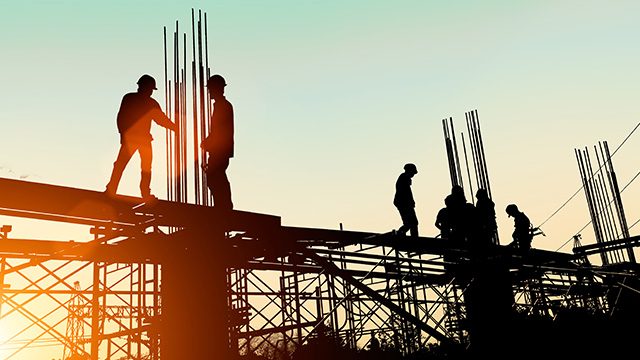SUMMARY
This is AI generated summarization, which may have errors. For context, always refer to the full article.

DAVAO CITY, Philippines – The economy is on track with its prospect of a 7% growth in 2018, hinged on the government’s continuous rollout of its infrastructure program.
Finance Secretary Carlos Dominguez III said this Friday, March 9, during the country’s annual briefing with the Asian Development Bank (ADB) in Davao City.
“We fully expect to grow our economy by 7% or better,” he added.
The finance chief, who also sits as chair of the ADB’s Board of Governors, said his expectation is rooted in the Duterte administration’s Build, Build, Build program.
Included in the program are 5 projects in Mindanao:
- P5.4-billion Malitubog-Maridagao Irrigation Project Phase 2 (Cotabato and Maguindanao)
- P4.86-billion Panguil Bay Bridge Project (Misamis Oriental and Lanao del Norte)
- P40.57-billion Francisco Bangoy International Airport expansion (Davao City)
- P14.6-billion Laguindingan Airport expansion (Misamis Oriental)
- P35.26-billion, 102-kilometer Mindanao Railway Project Phase 1 (connecting the cities of Davao, Tagum, and Digos)
“Mindanao today is at the front and center of the Build, Build, Build infrastructure program. In fact, 5 of the Duterte administration’s flagship infrastructure projects already approved by the NEDA Board are in Mindanao island,” Dominguez said.
The plan, which puts focus on the island region, is deemed critical, he said, so the country’s growth becomes inclusive.
Earlier, the Mindanao Development Authority (MinDA) proposed that the region gets at least P1.35 trillion to fund projects until 2022, all of them meant to improve connectivity on the island, at the same time helping close the poverty gap.
Earlier, Bank of the Philippine Islands (BPI) lead economist Emilio Neri also made the 7%-or-more estimate, according to the the BPI Investment Outlook.
Neri noted the growth factor would be the government’s promise to ramp up spending, to which several state economic planners agreed during Friday’s meeting.
Carlos Bernardo Abad Santos, assistant secretary for policy and planning of the National Economic and Development Authority (NEDA), said what would likely pull down national growth are delays in the implementation of infrastructure projects, climate change, the slowdown of advanced economies, and security concerns .
The Philippines is among the top performing Southeast Asian economies in terms of growth, said Bangko Sentral Deputy Governor Almasara Cyd Amador, citing state statistics.
She said the country gained positive economic growth for 76 consecutive quarters beginning 1999.
With aggressive investment agenda, she said the country has a “springboard to stronger growth.”
The Philippines grew by 6.7% in 2017, thanks to a recovering agriculture sector, strong government consumption, and better exports and imports. Last year’s growth made the Philippines among the fastest in Asia. – Rappler.com
Add a comment
How does this make you feel?
There are no comments yet. Add your comment to start the conversation.